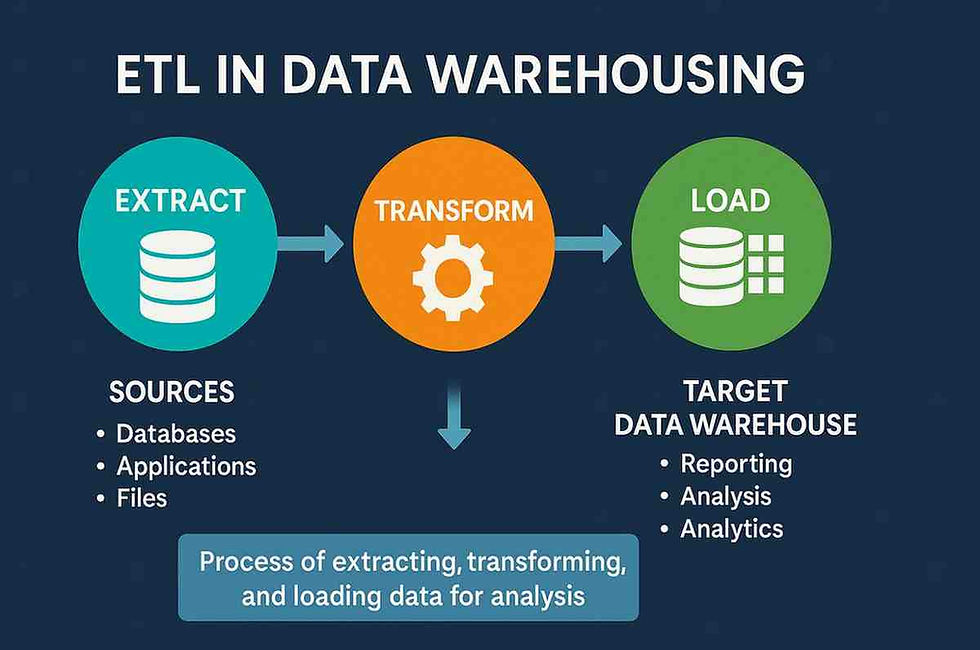Guide to Software Testing Defect Life Cycle in 2025
- Gunashree RS
- Jul 17
- 7 min read
In today's fast-paced software development environment, understanding the software testing defect life cycle is crucial for delivering high-quality applications. Whether you're a QA professional, developer, or project manager, mastering this process can significantly impact your team's efficiency and product quality.
The defect life cycle represents the journey a bug takes from discovery to resolution, providing a structured approach to managing software issues. This comprehensive guide will walk you through every aspect of the defect life cycle, helping you implement best practices that streamline your testing processes.

Understanding the Software Testing Defect Life Cycle
The software testing defect life cycle is a systematic process that tracks defects from identification through resolution. This standardized approach ensures consistency, improves communication between team members, and helps maintain software quality throughout development.
Think of it as a roadmap that guides your team through the complex process of bug management. Each stage has specific objectives, responsibilities, and outcomes that contribute to the overall success of your software project.
Key Components of Defect Management
Before diving into the life cycle stages, it's essential to understand what constitutes a defect. In software testing, defects are deviations from expected behavior that can manifest in various forms:
Functional defects: Issues affecting core functionality
Performance defects: Problems impacting system speed or responsiveness
Usability defects: Challenges affecting user experience
Security defects: Vulnerabilities that could compromise system integrity
Compatibility defects: Issues arising from different environments or platforms
The Six Critical Stages of Defect Life Cycle
1. Defect Discovery and Reporting
The journey begins when a tester identifies a potential issue during testing activities. This initial stage involves:
Discovery Process:
Executing test cases systematically
Comparing actual results with expected outcomes
Identifying deviations or anomalies
Documenting initial findings
Reporting Requirements:
Clear defect description
Steps to reproduce the issue
Expected vs. actual results
Environment details
Supporting evidence (screenshots, logs)
Priority and severity assessment
Effective reporting sets the foundation for successful defect resolution. Teams should establish standardized templates that capture all necessary information while remaining user-friendly.
2. Defect Triage and Assignment
Once reported, defects enter the triage phase where project managers and team leads evaluate and prioritize issues. This stage involves:
Evaluation Criteria:
Business impact assessment
Technical complexity analysis
Resource availability review
Timeline considerations
Risk assessment
Assignment Process:
Selecting appropriate team members
Considering expertise and workload
Setting target resolution dates
Establishing communication channels
The triage process ensures that critical issues receive immediate attention while less urgent defects are scheduled appropriately.
3. Investigation and Analysis
Assigned developers begin the investigation phase, working to understand the root cause of the defect. This stage includes:
Investigation Activities:
Code review and analysis
Environment replication
Log file examination
System behavior study
Impact assessment
Analysis Techniques:
Root cause analysis methodologies
Code debugging procedures
System integration reviews
Performance profiling
Security vulnerability assessments
Thorough investigation prevents recurring issues and helps identify underlying system problems.
4. Resolution and Implementation
After understanding the defect, developers implement solutions through:
Resolution Strategies:
Code modification and optimization
Configuration adjustments
Database corrections
Integration improvements
Performance enhancements
Implementation Best Practices:
Following coding standards
Conducting peer reviews
Documenting changes
Maintaining version control
Ensuring minimal system impact
Quality resolution requires careful planning and execution to avoid introducing new issues.
5. Verification and Validation
The testing team verifies that the implemented fixes resolve the original defect through:
Verification Process:
Retesting original scenarios
Regression testing execution
Integration testing validation
Performance impact assessment
User acceptance confirmation
Validation Criteria:
Original defect resolution
No new issues introduced
System stability maintained
Performance requirements met
User experience improved
Comprehensive verification ensures that fixes are effective and don't create additional problems.
6. Closure and Documentation
The final stage involves formally closing resolved defects and updating documentation:
Closure Activities:
Final verification confirmation
Stakeholder approval
Status updates
Metrics collection
Lessons learned documentation
Documentation Updates:
Test case modifications
Process improvements
Knowledge base updates
Training material revisions
Best practice documentation
Proper closure ensures knowledge retention and process improvement.
Best Practices for Optimizing Defect Life Cycle
Establish Clear Communication Channels
Effective communication accelerates defect resolution and prevents misunderstandings. Implement these practices:
Regular status meetings
Standardized reporting formats
Automated notification systems
Clear escalation procedures
Collaborative tools integration
Implement Robust Tracking Systems
Modern defect tracking tools provide visibility and control over the entire life cycle:
Essential Features:
Automated workflow management
Real-time status updates
Comprehensive reporting
Integration capabilities
Customizable dashboards
Popular Tools:
Jira for agile environments
Azure DevOps for Microsoft ecosystems
Bugzilla for open-source projects
MantisBT for lightweight tracking
TestRail for test management integration
Prioritize Defects Effectively
Not all defects are created equal. Implement a systematic prioritization approach:
Severity Levels:
Critical: System crashes or data loss
High: Major functionality impacted
Medium: Minor feature issues
Low: Cosmetic or enhancement requests
Priority Factors:
Business impact assessment
Customer visibility
Technical complexity
Resource requirements
Timeline constraints
Conduct Regular Process Reviews
Continuous improvement requires regular assessment of your defect life cycle:
Review Activities:
Process efficiency analysis
Team performance evaluation
Tool effectiveness assessment
Stakeholder satisfaction surveys
Metrics trend analysis
Improvement Opportunities:
Workflow optimization
Tool upgrades
Training enhancements
Process standardization
Automation implementation
Common Challenges and Solutions
Challenge 1: Incomplete Defect Reports
Problem: Insufficient information leads to delayed resolution and miscommunication.
Solution: Implement mandatory reporting templates with validation rules and provide training on effective defect reporting.
Challenge 2: Poor Defect Prioritization
Problem: Teams struggle to focus on the most critical issues first.
Solution: Establish clear prioritization criteria and involve business stakeholders in the triage process.
Challenge 3: Inadequate Testing Coverage
Problem: Defects slip through due to insufficient testing scenarios.
Solution: Implement risk-based testing approaches and maintain comprehensive test case repositories.
Challenge 4: Communication Gaps
Problem: Poor communication between teams leads to delays and misunderstandings.
Solution: Establish regular communication protocols and use collaborative tools for real-time updates.
Measuring Defect Life Cycle Effectiveness
Key Performance Indicators
Track these metrics to assess your defect management effectiveness:
Efficiency Metrics:
Average resolution time
First-time fix rate
Defect discovery rate
Regression defect count
Team productivity measures
Quality Metrics:
Defect density
Escaped defect rate
Customer satisfaction scores
System stability indices
Performance impact measures
Reporting and Analytics
Create comprehensive reports that provide insights into:
Defect trends over time
Team performance comparisons
Process bottleneck identification
Cost impact analysis
Improvement opportunity assessment
Future Trends in Defect Management
Artificial Intelligence Integration
AI-powered tools are revolutionizing defect management through:
Automated defect classification
Predictive analytics for issue identification
Intelligent test case generation
Root cause analysis automation
Performance optimization recommendations
Shift-Left Testing Approach
Organizations are moving defect detection earlier in the development cycle:
Static code analysis integration
Unit testing automation
Continuous integration practices
Early stakeholder involvement
Proactive quality measures
DevOps Integration
Modern defect management seamlessly integrates with DevOps practices:
Continuous testing pipelines
Automated defect tracking
Real-time monitoring systems
Collaborative development environments
Rapid feedback loops
FAQ
What is the software testing defect life cycle?
The software testing defect life cycle is a systematic process that tracks defects from identification through resolution. It includes stages like discovery, triage, investigation, resolution, verification, and closure, ensuring consistent defect management across development teams.
How long does a typical defect life cycle take?
The duration varies significantly based on defect complexity, team size, and organizational processes. Simple defects might resolve within hours, while complex issues could take weeks. Average resolution times typically range from 2-10 business days for most organizations.
What's the difference between defect severity and priority?
Severity indicates the technical impact of a defect on system functionality, while priority reflects the business urgency for resolution. A low-severity cosmetic issue might have high priority if it affects customer-facing features.
Who is responsible for defect triage?
Defect triage typically involves project managers, team leads, and senior developers who evaluate defects based on business impact, technical complexity, and resource availability. Some organizations use dedicated triage teams for consistent decision-making.
How can automation improve the defect life cycle?
Automation enhances defect management through automated testing, defect tracking, notification systems, and reporting. It reduces manual effort, improves consistency, and accelerates resolution times while maintaining quality standards.
What are the most common defect life cycle tools?
Popular tools include Jira for agile environments, Azure DevOps for Microsoft ecosystems, Bugzilla for open-source projects, and TestRail for comprehensive test management. Tool selection depends on team size, budget, and integration requirements.
How do you measure defect life cycle effectiveness?
Key metrics include average resolution time, first-time fix rate, defect discovery rate, regression defect count, and customer satisfaction scores. Regular analysis of these metrics helps identify improvement opportunities.
What happens if a defect cannot be reproduced?
Non-reproducible defects are typically marked as "Cannot Reproduce" and may be closed or deferred. Teams should document available information, request additional details from reporters, and consider environment-specific factors.
Conclusion
Mastering the software testing defect life cycle is essential for delivering high-quality software in today's competitive environment. By implementing structured processes, leveraging appropriate tools, and following best practices, teams can significantly improve their defect management effectiveness.
Remember that successful defect management requires continuous improvement, clear communication, and stakeholder collaboration. As technology evolves, stay updated with emerging trends and tools that can enhance your defect management capabilities.
The investment in establishing robust defect life cycle processes pays dividends through improved software quality, reduced development costs, and enhanced customer satisfaction. Start implementing these practices today to transform your team's approach to defect management.
Key Takeaways
• Structured Process: The defect life cycle provides a systematic approach to managing software issues from discovery to resolution
• Six Critical Stages: Discovery, triage, investigation, resolution, verification, and closure form the foundation of effective defect management
• Clear Communication: Establishing standardized reporting templates and communication channels accelerates defect resolution
• Prioritization Matters: Implementing systematic prioritization based on severity and business impact ensures critical issues receive appropriate attention
• Tool Integration: Modern defect tracking tools provide automation, visibility, and control over the entire life cycle process
• Continuous Improvement: Regular process reviews and metrics analysis help identify optimization opportunities
• Team Collaboration: Effective defect management requires coordinated efforts from testers, developers, and project managers
• Quality Focus: Thorough verification and validation prevent defect recurrence and maintain system stability
• Future-Ready: AI integration and DevOps practices are transforming traditional defect management approaches
• Measurement Importance: Tracking key performance indicators helps assess effectiveness and guide improvement initiatives




This expert guide on bot setup is clear, informative, and practical for users at different https://www.nutritist.us/ skill levels. Educational content like this empowers smarter workflows. Nutritist values accessible knowledge that simplifies complex topics, helping individuals and teams use technology efficiently without unnecessary confusion or overwhelm.
Looking for a game that’s easy to play but hard to master? Flappy Dunk combines the simple tap-to-fly mechanics of Flappy Bird with the fun of basketball. Your goal: tap to make the ball fly through hoops and score points. Sounds simple, right? But timing and precision are key flappy dunk —miss a hoop and you start over!
INDOVIP138
indovip138
indovip138
indovip138
indovip138
indovip138
indovip138
indovip138
indovip138
indovip138
indovip138
indovip138
indovip138
indovip138
indovip138
indovip138
indovip138
indovip138
indovip138
indovip138
indovip138
indovip138
indovip138
indovip138
indovip138
indovip138
indovip138
indovip138
indovip138
indovip138
indovip138
indovip138
indovip138
indovip138
indovip138
indovip138
indovip138
indovip138
indovip138
indovip138
indovip138
indovip138
indovip138
indovip138
indovip138
Link INDOVIP138
indovip138
indovip138
indovip138
indovip138
indovip138
indovip138
indovip138
indovip138
indovip138
indovip138
indovip138
indovip138
indovip138
indovip138
indovip138
indovip138
indovip138
indovip138
indovip138
indovip138
indovip138
indovip138
indovip138
indovip138
indovip138
indovip138
indovip138
indovip138
indovip138
indovip138
indovip138
indovip138
I am also applying the same Defect Life Cycle process and getting the standardized That's Not My Neighbor template report helps reduce the exchange time between tester and developer by at least 30%. The AI-powered log analysis also helps me detect the root cause faster for sure.